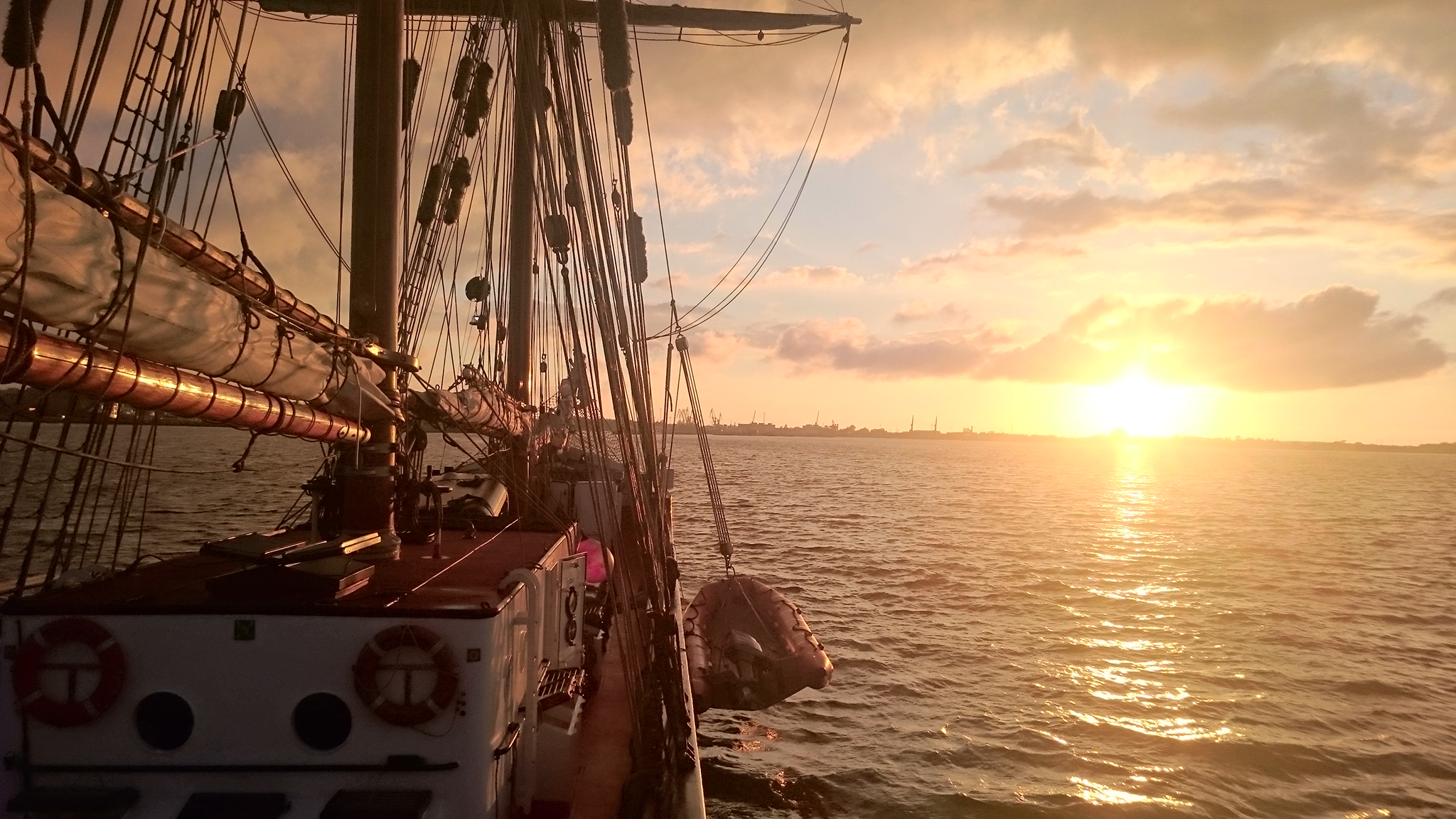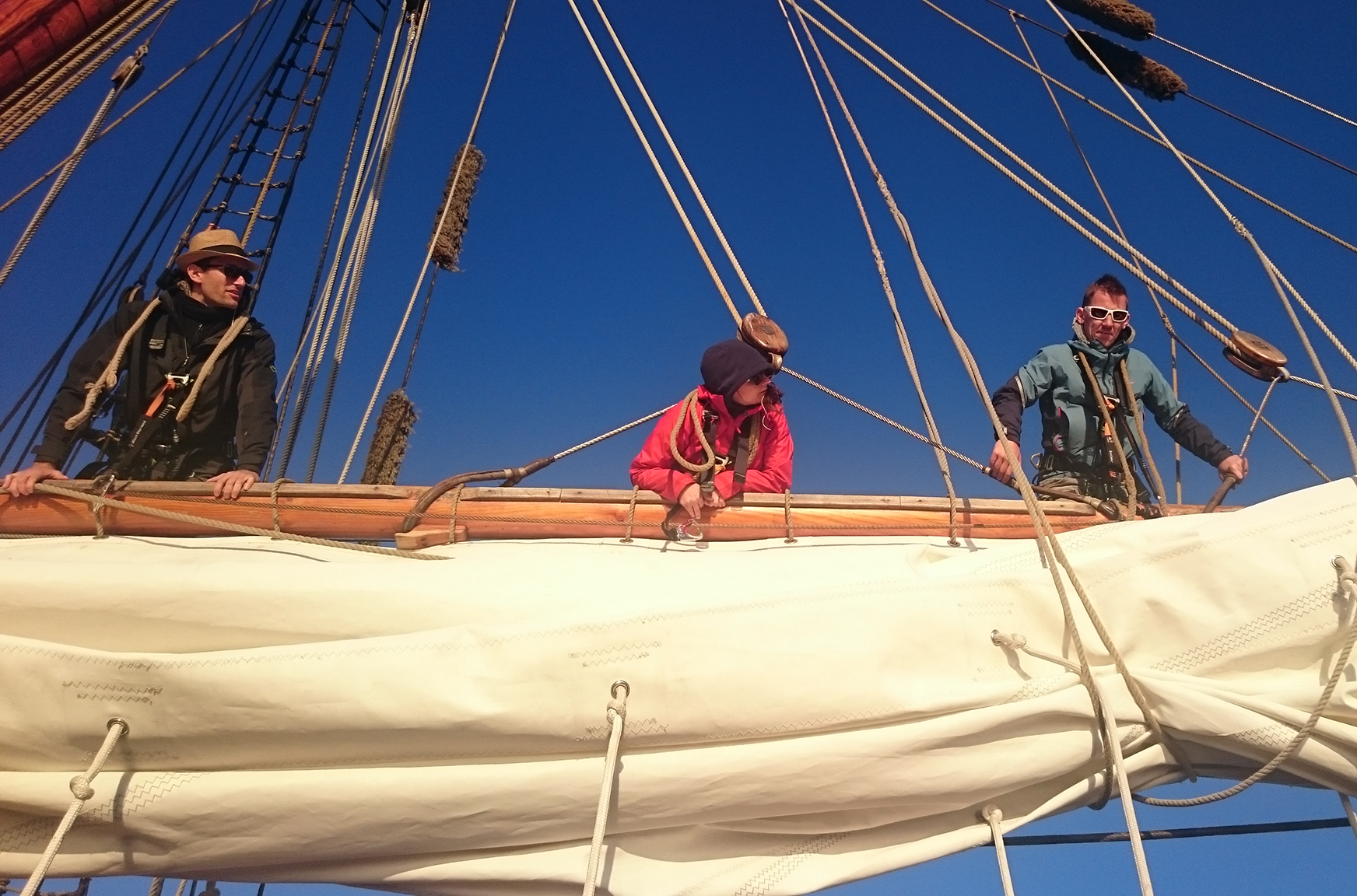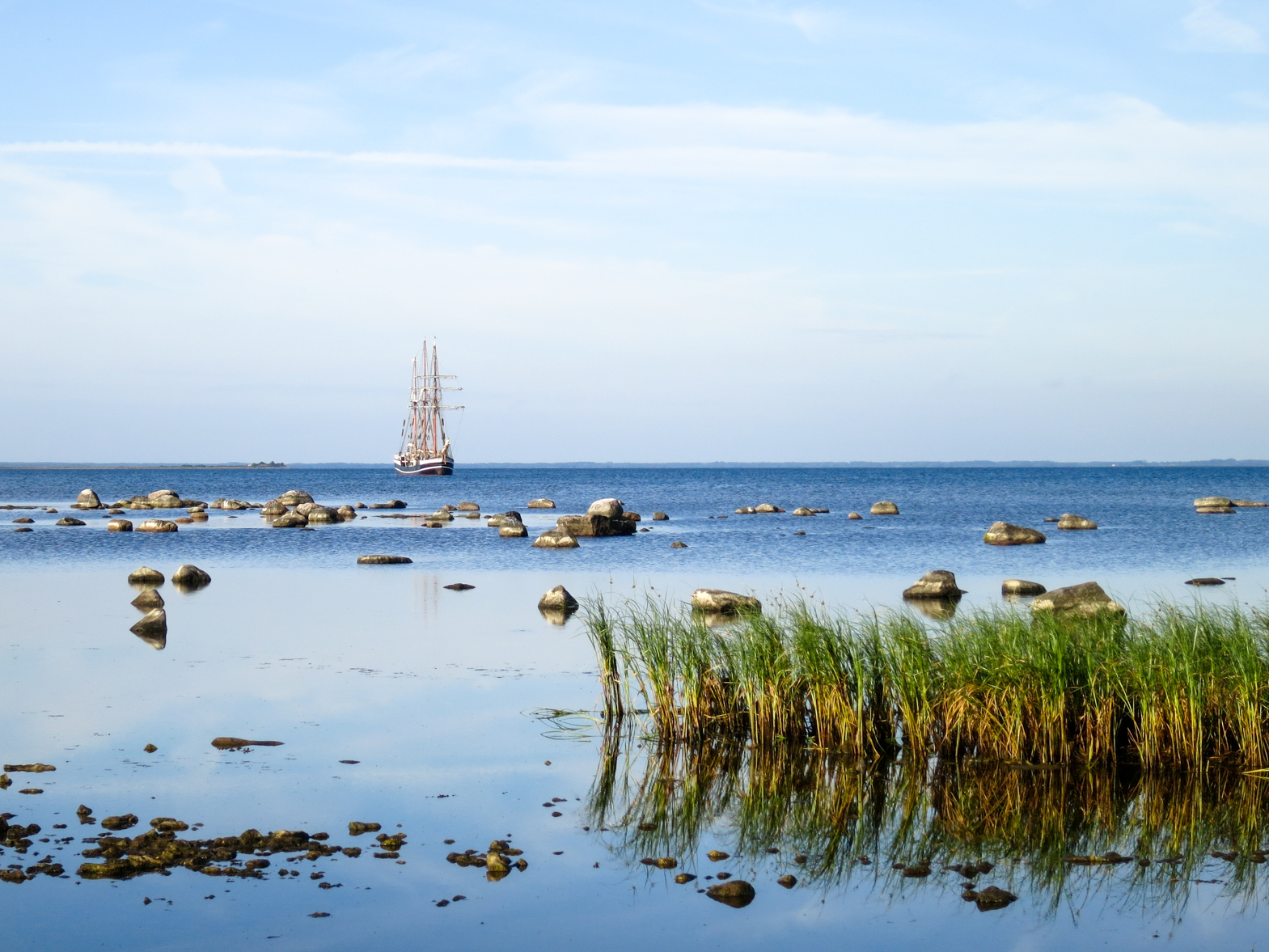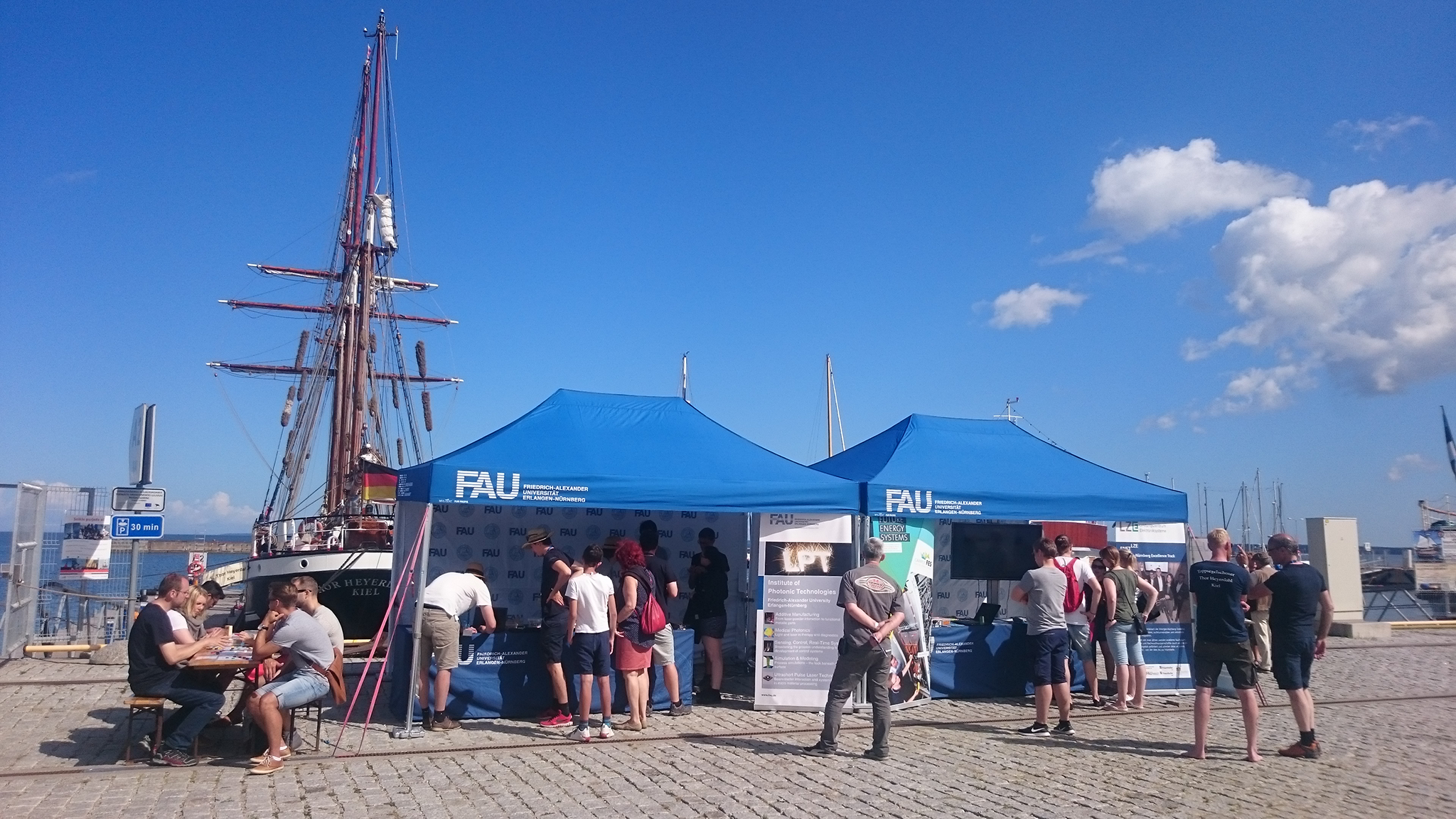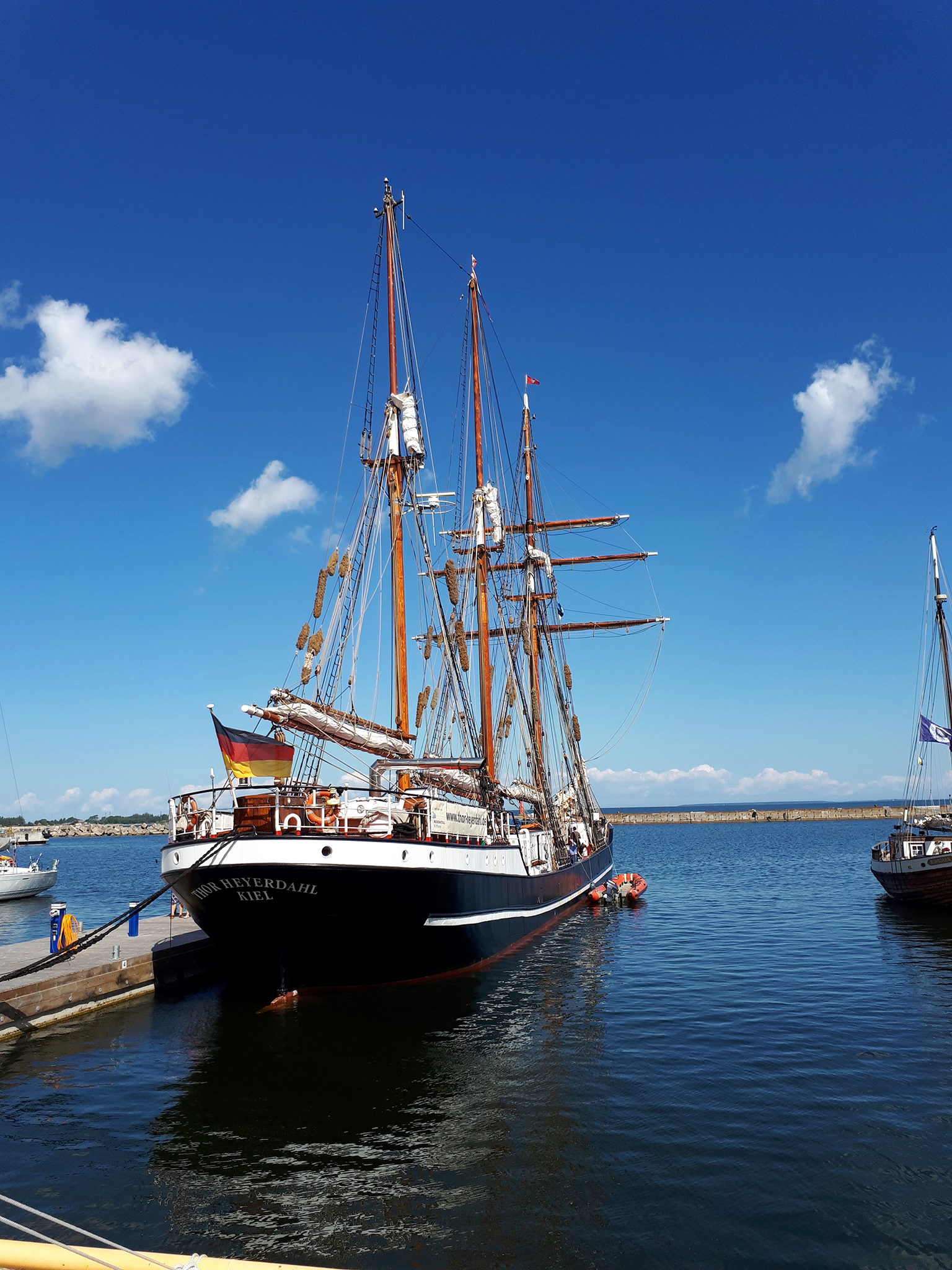The story begins in the summer of 2017, when the Friedrich-Alexander-Universität Erlangen-Nürnberg invites its own researchers and other scientists to take a trip on the Thor Heyerdahl. In a journey broken into three separate stages, the ship sails from Kiel to Rostock via Malmö, Riga, Helsinki, Tallinn and Gdansk. For each stage, there are different scientific teams on board, who carry out interdisciplinary research and work side by side on deck. Nadine Lang, who works for the Leistungszentrum Elektroniksysteme (LZE) team at Fraunhofer IIS, was there for a week and reports on her experiences and insights.
Science sets sail on the Thor Heyerdahl
9.11.2017 | Dr. Nadine Lang recounts her experiences
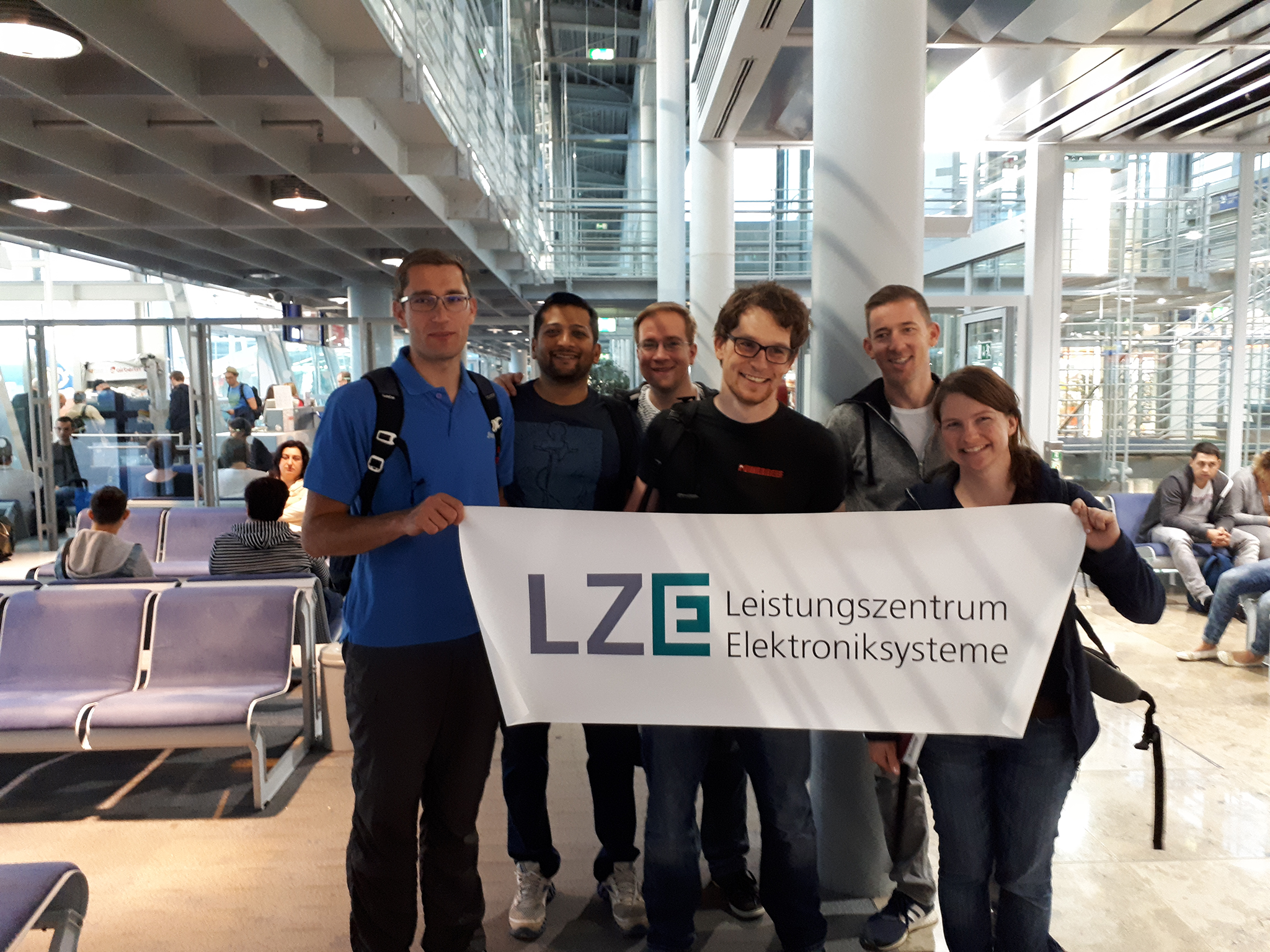
July 25, first day, journey to Riga. My alarm clock rings at 4.00 am At 6.00 am, spirits are high as we prepare to board the airplane (see photo) for Berlin, the first stop on the way to Riga.
From there, we fly to the Latvian capital. All the Erlangen scientists are on the same plane – twelve of us in total. In Riga, we wait at the luggage carousel – and wait and wait, until finally the gates shut and the belt stops. Twelve of us from Erlangen are missing our luggage. It’s now shortly before 1.00 pm, and the Thor Heyerdahl is scheduled to set sail at 2. Following a quick word with the captain, the departure time gets pushed back a little, giving us enough time to dash into downtown Riga and grab some essentials, such as underwear, socks, t-shirts and toothbrushes.
On the ship, we discover that those who had completed the first stage on the Thor Heyerdahl before us had got wind of our misfortune. Like good sailors, they lend us sleeping bags, rubber boots, rain gear, shampoo and sun cream – the first team building measure, for which we are deeply grateful.
Next, it’s time for a short introduction to sailing and the rules on board. For example, when should you fetch a lifejacket? And when the bell rings, does that mean that our meal is ready or that all hands are required on deck? It’s a steep learning curve …
“Raise the peak halyard!”
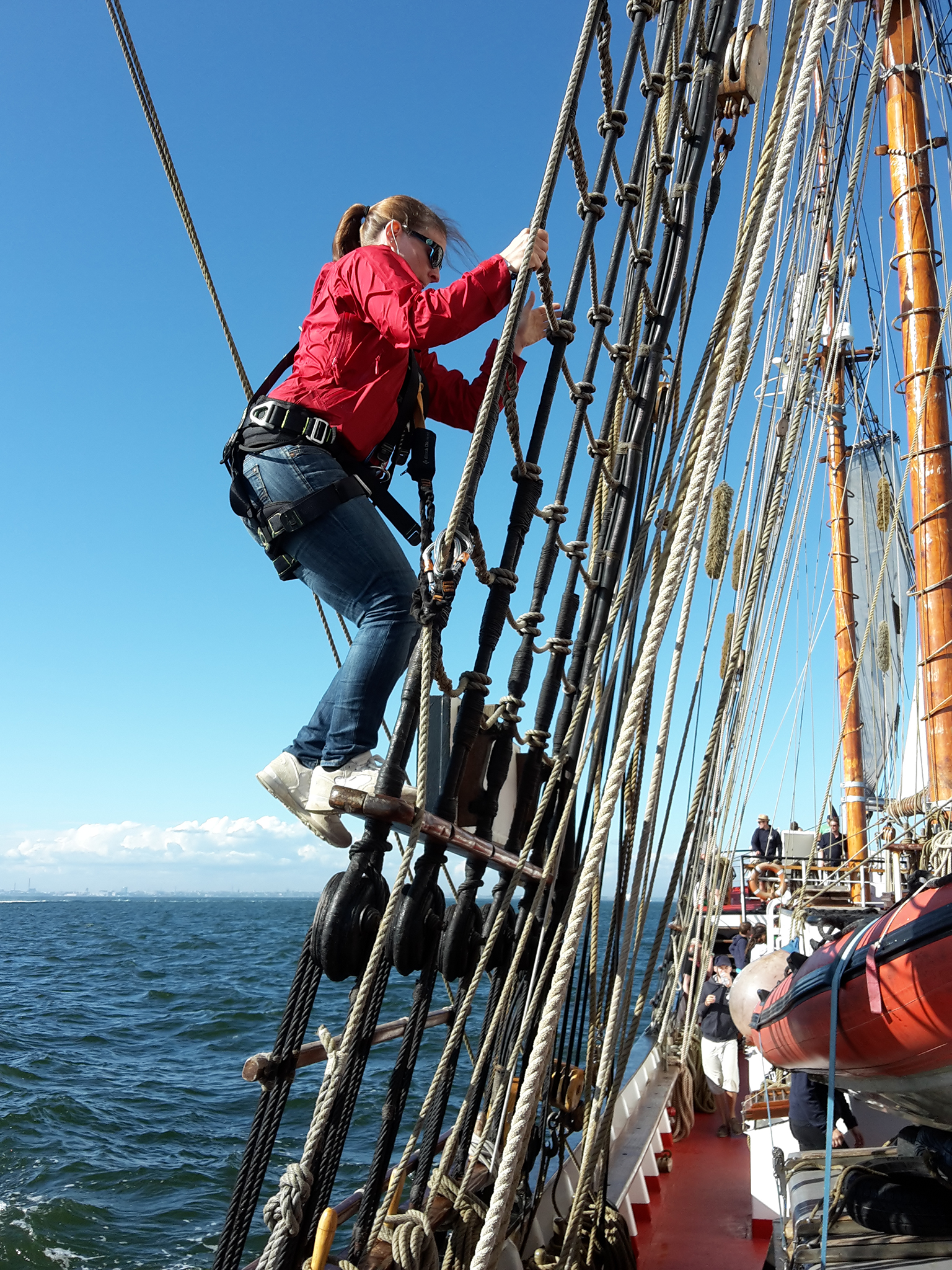
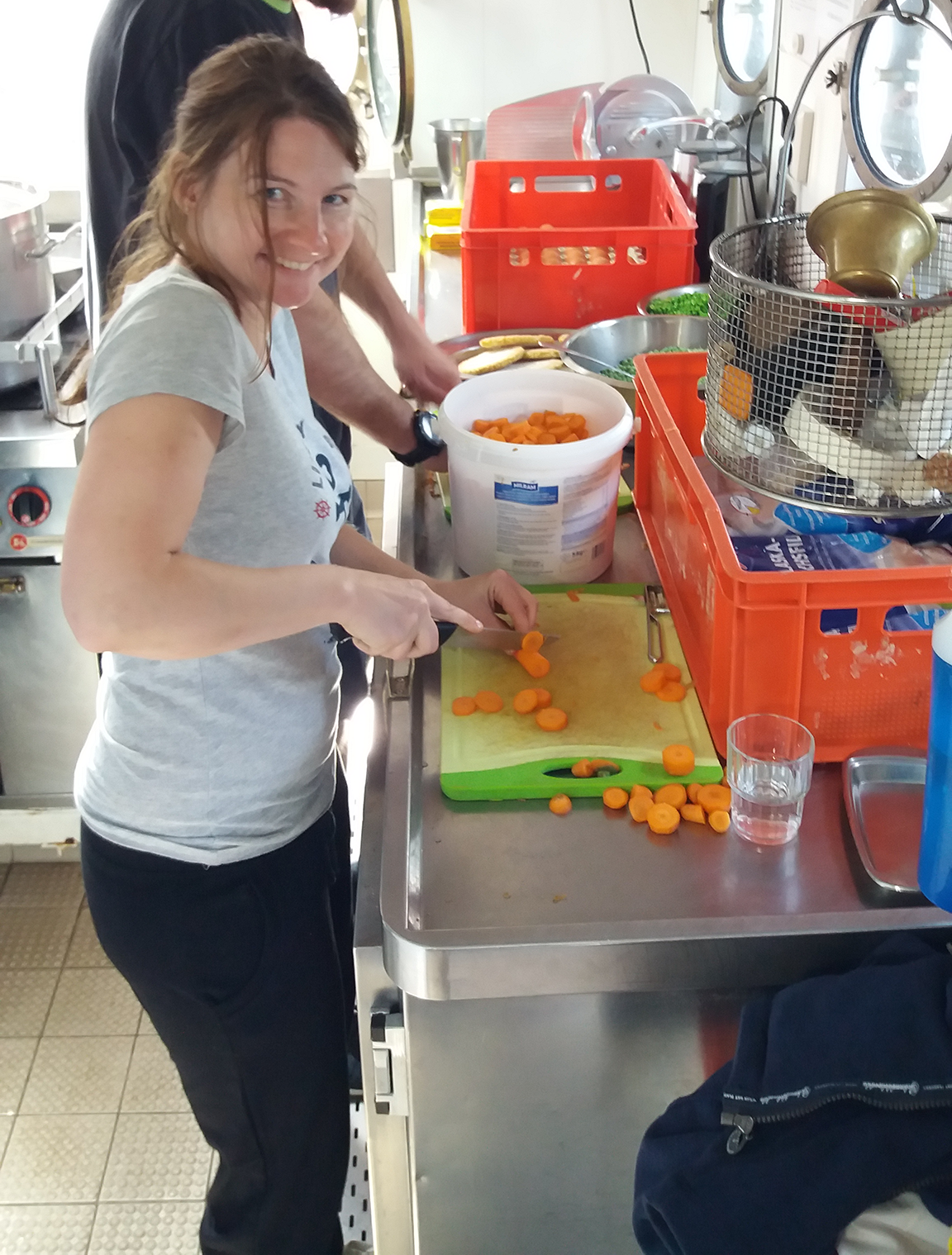
Finally, we’re ready to set sail from Riga. Once the harbor is at our backs, our nautical initiation continues with practical information about everday life on board a ship. We learn what to do when it’s our watch. For my part, I’m assigned to Watch 2, together with the entire ENET team and our guest scientists. In Watch 2, we’re on duty between 4.00 and 8.00 am – yikes! – and between 4.00 and 8.00 pm. During our watch, it’s our job to steer the ship, keep lookout for other ships and land, correct the position, monitor and log the weather, and check the entire ship for fire or water ingress – and repeat each task hourly …
In other words, we are kept busy. If the additional diesel engine is in operation, we also check it and oil it hourly. When the watch is over, it’s time for happy hour. As fun as that sounds, it actually means that we have to clean the ship!
Furthermore, each watch is responsible for a specific set of sails – in our case, the mainsail and the topsail. This entails raising and lowering the sail whenever the situation demands. The whole watch team then has to assemble at predetermined places and follow the instructions of the watch leader: “Raise the peak halyard!”, “Slack the guys!”
And so we sail through the Baltic Sea, past over 2,000 mostly uninhabited small islands. This gives me my first opportunity to chat with the scientists on board. Despite our different specialist disciplines, we quickly find common areas of interest. For example, I have fascinating discussions with a professor for big data from Osnabrück and with a professor at the Karlsruhe Institute of Technology (KIT) who specializes in superconductivity and refrigeration technology. Amid the gentle rocking of the waves, I even get to float a few vague project ideas.
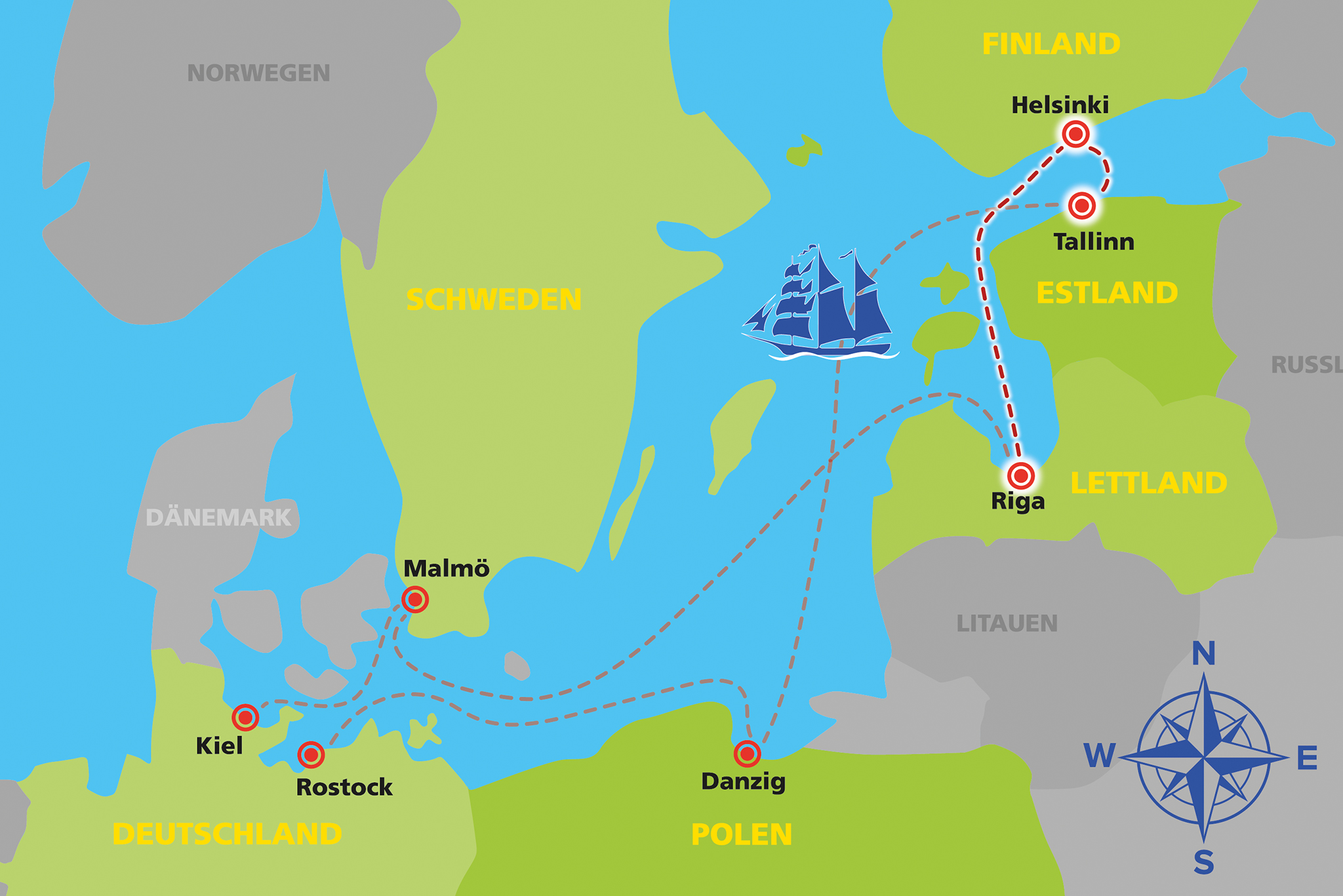
Run and dip
The next lesson we learn is that even a big ship lacks the space for a jog. But sailors have a good remedy for this problem: run and dip. It sounds simple enough. You seek out an attractive island, pull on your running shoes at first light, hop onto one of the dinghies or the motor-powered lifeboat (important tip for all those averse to rowing: always try to get on the lifeboat!) and ride or paddle over to the island. Once ashore, you do a lap of the island and then cool off in the 17°C chill of the Baltic. After that, it’s back to the ship for breakfast. Well, that’s the theory anyway …
Our first run and dip is more like a jungle expedition, as the island we choose is beautiful only from afar. Once there, we have to wade through foul swampy ground, which gives way eventually to dense scrub and jungle. At some stage, we find an abandoned watchtower. Truth be told, it wasn’t much of a run at all, so we decide to swim the 700 meters from the coast back to the ship. And so we make up for the lack of running with a very thorough – and enjoyable – dip!
Open Ship Day in Helsinki
Next, we head straight for the Port of Helsinki and our next lesson: everything has to be “shipshape and Bristol fashion” for entry to the port! This means, cleaning and tidying – and above all, taking down all the sails and folding them away neatly. As we are responsible for the topsail – the middle square sail at the bow of the ship, fixed at a height of around 20 meters – climbing is the order of the day! Climbing is a hobby of mine, so this is right down my street. It’s a thrill to put on a climbing harness again. Once we climb up, seven people stand on a wire cable and, leaning forward, try to pack away the sail neatly. At this stage, we’re already in the harbor and becoming an attraction of sorts for the people on shore. Nevertheless, our watch leader says we can be proud of our work: “For beginners, you managed very nicely.”
On the day after our arrival, we organize our first Open Ship Day. To this end, we set up pavilions and present our research projects. From Fraunhofer IIS, for example, we showcase the FitnessSHIRT and the ELECSA sensor from the High Performance Center for Electronic Systems (LZE). Scientists from the University of Helsinki drop by for a look – and approximately 80% of the passengers of the AIDA, as the stop for their transfer bus is conveniently located right next to our berth.
Off to Tallinn, or how do I back a sailboat into a dock?
Our journey continues to Tallinn. Although this is a short distance away, there is very little wind, so it takes a few hours. The highlight of this leg of the journey awaits us in the Port of Tallinn, which is relatively small and narrow. With our ship length of 50 meters, we stand out among the small yachts in the harbor. As a result, we have to back the boat into a slip. We have to abandon our first attempt in the afternoon, because of strong winds which keep blowing us so far off line that we almost crush a few small yachts. As evening falls, the wind dies down, so we try our hand at parking a 50-meter-long sailing ship in the dark! This is something even our captain doesn’t do every day. The crew is suitably nervous, and you could hear a pin drop on the deck of the Thor Heyerdahl during the maneuver. After about an hour, we can finally breathe a sigh of relief as the ship’s bell rings out to signal that the maneuver has been successful.
Our Open Ship Day the following day is a relatively quiet affair. We’re not in the city center this time as we were in Helsinki, but on the outskirts. Fortunately, our stand is in a ship museum featuring old warships and coast guard ships, so we do attract some passersby. A delegation from Tallinn University also stops by, as does an Estonian textile entrepreneur, who is actually on vacation with his family but is very interested in our textile-integrated sensors. At the end of the day, the weather takes a turn for the worse and we pack up in record time – the exercise included a fiendishly difficult game of cargo hatch Tetris. To relax afterward, we are treated to an exclusive guided tour of the city by our Estonian guest scientist, who shows us its hidden gems and regales us with stories from its fascinating history.
At the end of the adventure, we all get a certificate. I can look back on 279 nautical miles full of new lessons, interesting conversations, project ideas, and – most importantly – no seasickness. And the discovery that a team on a sailing ship develops a close bond thanks to the unique nature of the challenge.
P.S.: My luggage is delivered safe and sound to my home three days after I get back. It had spent the whole time in a dark corner of the airport in Berlin … My journey was much more exciting, I must say!
